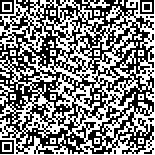Archive > Volume 38 Issue 1 > 2012,38(1):103-108. DOI:10.7519/j.issn.1000-0526.2012.01.012 Prev Next
The Recognization and Study of Microrelief’s Influence on Wire Icing in Hubei Province
- Article
- Figures
- Metrics
- Preview PDF
- Reference
- Related
- Cited by
- Materials
Abstract:
Wire icing is an important influencing factor of power grid’s safety. It is of important directive significance for the risk division of wire icing and the feasibility demonstration of power gird construction to study the correlativity between wire icing and microrelief elements. The paper uses 1:50000 large-scale topographic maps and investigation data of wire icing disasters to study the correlativity of different microrelief elements and icing thickness, distinguish the microrelief elements which influence icing thickness remarkably and analyze quantitative relations between icing thickness and microrelief elements. Thus we obtain the sensitivity levels of the microrelief elements to different icing thickness range. The results show that, among the microrelief elements, the topographic roughness, altitude, distance from water body and land use type are the most significant elements which influence the icing thickness; the relationship of topographic roughness and design icing thickness is a power function; the relationship of altitude and design icing thickness is a logarithm function; the relationship of distance from water body and design icing thickness is a piecewise function, and the function relation of land use type and design icing thickness is not obvious. However, icing disaster is of obvious distribution configuration with land use type. While topographic roughness and altitude increase, icing thickness increases, its change rate and sensitivity descend; when topographic roughness is less than 40 m, it is the most sensitive to icing risk; when altitude is between 25-100 m, it is the most sensitive to icing risk; while distance from water body increases, icing thickness decreases after increasing trend, its change rate and sensitivity also decrease after increasing trend; when the distance is between 2-2.7 km, it is the most sensitive to icing risk. It is found that wire icing disasters mainly occur in water body, woodland, cultivated field and meadow, the sensitivity level of water body to icing risk is 1.5 times of woodland, 3.6 times of cultivated field, 16.7 times of meadow respectively.
Keywords:
Project Supported:
Clc Number:


Mobile website









